How To Use Kreg Jig
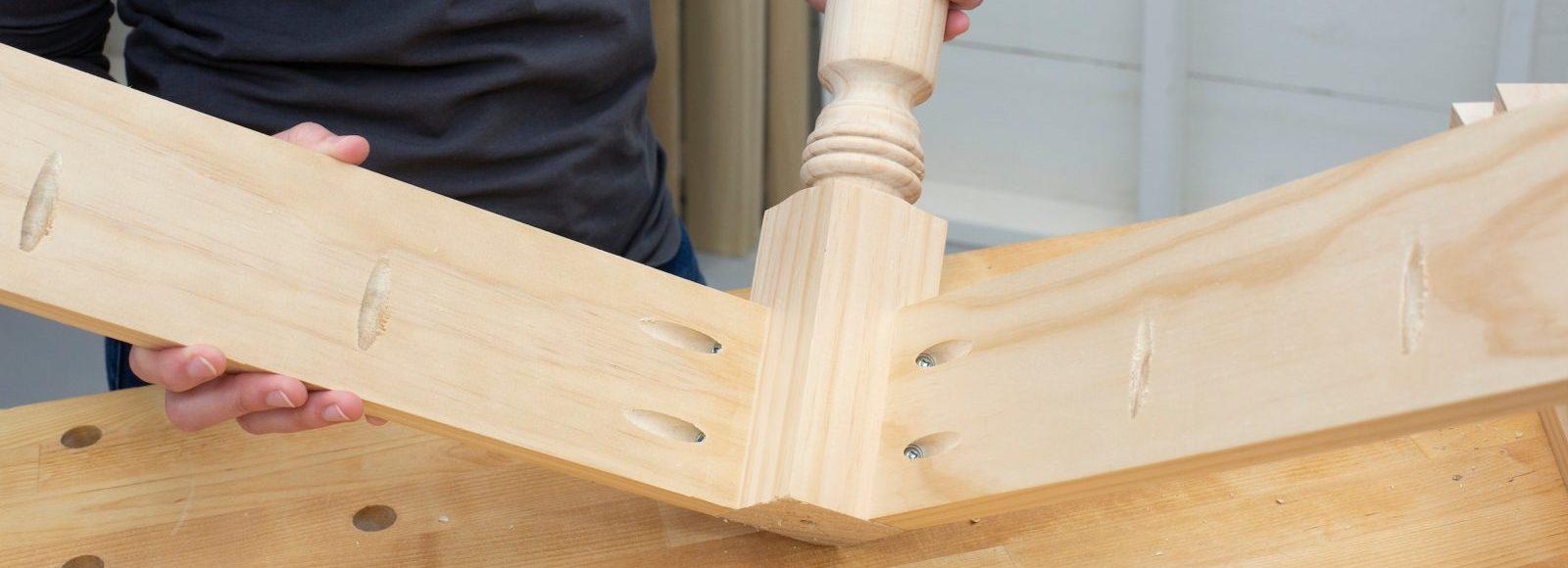
Make seven simple joints with your pocket-hole jig
Get familiar with these simple joints to build projects of all kinds
There'due south no doubt that pocket-hole joinery makes it easier to build woods projects. When you have a Kreg Pocket-Hole Jig and Pocket-Hole Screws, a drill, and your skill, there are so many things you can build. Plus, y'all tin can build them fast and build them to final.
Y'all might think that ways y'all'll take to learn a bunch of dissimilar techniques for using your pocket-hole jig. Truth is, you can build an incredible diverseness of projects with a few pretty basic joints. Nosotros'll accept yous through seven of them here. They fall into a couple of categories, based on how the pieces you are joining meet up: "flat" or at 90° angles.
Apartment joints
This kind of joint is made by attaching two pieces side past side so that the faces remain flat and flush. This joint is simple, only incredibly versatile. Here are a but a few things you can make by creating flat pocket-hole joints.
1. Panels:
By joining boards together border-to-edge, you can create wide panels for things such as table tops, cut boards, or even a workbench peak.

Hither's how:
1. Lay out your boards and marker them.
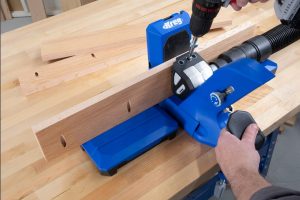
ii. Fix your pocket-hole jig for the thickness of textile you lot're using, and and then drill pocket holes along one edge of all the boards except the last ane.
three. Assemble the boards using Kreg Pocket-Hole Screws. Make certain you have the boards in the order y'all desire, and the edges and ends aligned. Check your owner's manual to find the correct spiral length for your material thickness. Use fibroid-thread screws for softwoods, or fine-thread screws for hardwoods. And if you're ever looking for a quick fashion to discover out exactly what kind your projection needs, attempt our online Screw Selector tool.
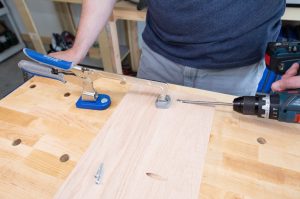 TIP: Clamp your joints for all-time results
TIP: Clamp your joints for all-time results
To hold the faces of the boards flush equally you assemble them, clamp across each joint as you drive in the screws. There are many kinds of Kreg Clamps that are designed to make pocket-hole construction easier, including Forest Project Clamps, Bench Clamps, or Classic Face Clamps.
two. Confront frames:
If you attach the stop of ane board to the edge of another, you'll create an "L" or "T" shape that'due south perfect for making a face frame for a cabinet or bookcase, or for making a frame-and-panel door.
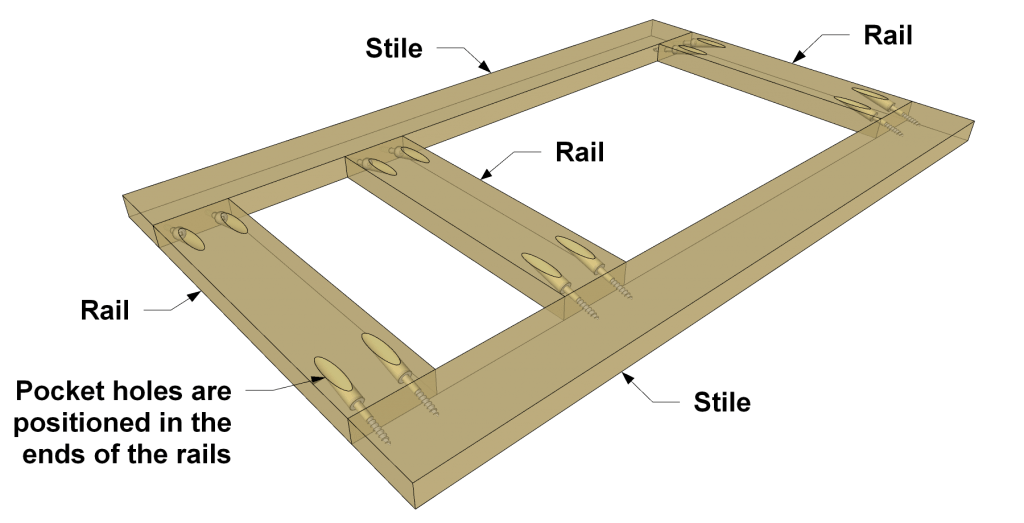
Here'due south how:
1. Cut your pieces, making sure the "rail" (horizontal pieces) are yet length, and that the "stiles" (vertical pieces) all match one another. This mode, you lot'll get tight joints and square corners.
2. 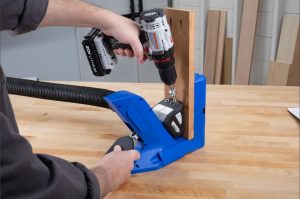 Drill pocket holes in the ends of all the rail. Your Kreg Pocket-Pigsty Jig offers easy hole-spacing options based on the width of your rails. You'll observe a handy guide in the owners manual–which you can even access online.
Drill pocket holes in the ends of all the rail. Your Kreg Pocket-Pigsty Jig offers easy hole-spacing options based on the width of your rails. You'll observe a handy guide in the owners manual–which you can even access online.
3. Gather the rails and stiles using Kreg Pocket-Hole Screws.
three. Mitered frames:
If you lot've e'er wanted to build your own frames for photos or other artwork, or you've wanted to dress upwards a plywood tabletop to look like real wood, you lot'll be happy to know that pocket-hole joinery makes edifice mitered frames easy.
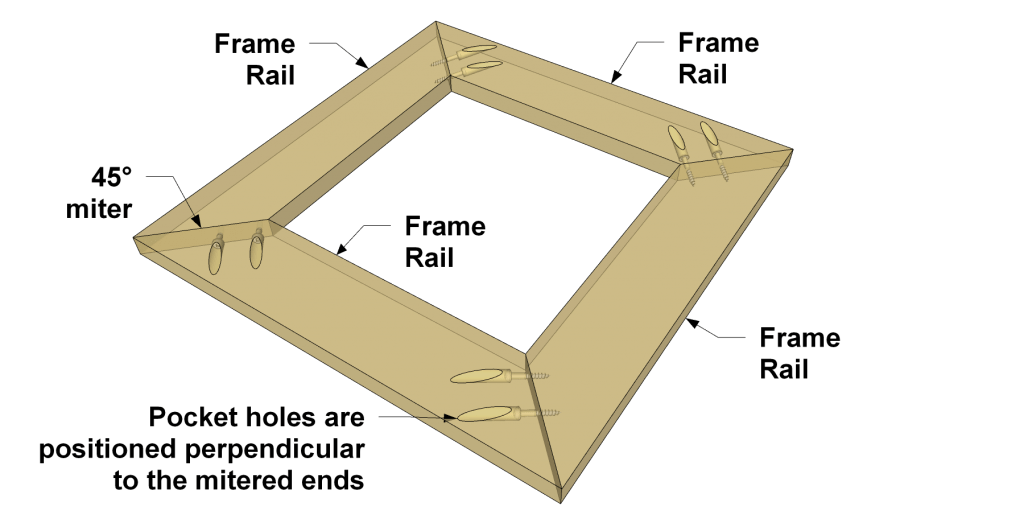
Hither'southward how:
one. Cut your pieces to length, mitering all the corners at 45°. Check that you have a tight fit.
ii. Drill pocket holes so they are perpendicular to the mitered end. If you can't fit ii pocket holes on one side, you may exist able to bring one in from each management.
iii. Marshal the pieces, and then spread glue on the mating ends. You don't need gum for force, but it will assist hold the pieces tightly together as seasonal humidity changes cause the boards to shrink or swell.
four. Assemble the boards using Kreg Pocket-Hole Screws.
 TIP: Use the correct pocket-hole screw
TIP: Use the correct pocket-hole screw
When you're building projects with pocket-hole joints, it's important to choose the right screw. Pocket-pigsty screws come up in multiple types and lengths that are optimized to ensure you go great strength and easy assembly. Just as chiefly, Kreg Screws are designed for pocket-hole joinery.
There are several factors that determine which i is right for you, including the blazon of wood you are using, and its thickness. Cheque out this guide to choosing the right screw to learn more than. Yous can too find the right spiral, quickly and easily, with our online Screw Selector tool.
4. Plywood edging:
Plywood is a great material for projection building only, in many cases, you lot won't desire to see the ply edges. With pocket-hole joinery, you tin encompass those edges using solid wood.
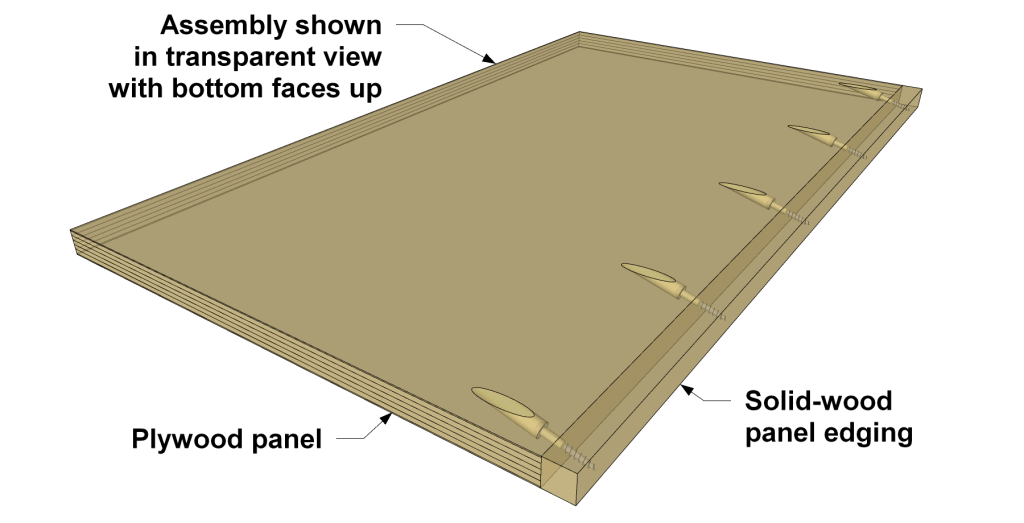
Here's how:
1. Cut your edging piece(s) to length, and to width if necessary. Y'all can brand your solid-wood edging as wide equally you desire, and you can easily use dimensional boards. Or you tin rip edging to any width you lot want using the Adaptive Cut System. The minimum width you'll want to utilise is 1/2″, every bit that's the narrowest width that will have a pocket-hole screw.
2. 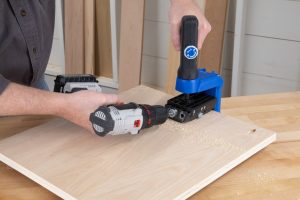
3. For the most seamless transition from the plywood to the solid wood, spread a thin layer of wood glue along the edge of the plywood.
iv. Clench the edging to the plywood. Note that plywood is almost always thinner than solid wood of the same stated thickness. So, make sure you align the faces that volition show. You can sand to bring the faces flush, if needed.
5. Drive in pocket-hole screws to secure the edging. For 3/4″ plywood and edging that's at least three/four″ wide, use 1 1/4″ screws. If yous're using one/2″-wide edging, choose 1″ screws, instead. If your edging is softwood, use coarse-thread screws. If you're using hardwood edging, choose fine-thread screws.
ninety° Joints
This kind of joint is made by attaching ii pieces at 90° angles to 1 some other so that they form an "L" shape, like y'all'd use when assembling a box. Just like with apartment joints, these are unproblematic, and make information technology possible to build many types of structures. Here are a just a few things you lot tin can make past creating 90° pocket-hole joints.
5. Boxes:
By joining boards or plywood panels together at 90° angles, you tin easily build boxes of near any size and shape. You might recollect "absurd, but I don't really need to build a lot of boxes," but think most information technology a little more. Y'all'll realize that many things have boxes at their core.
Kitchen cabinets, bookcases, closet and garage organizers, bath vanities, amusement centers, and so many more things are basically boxes that then get dressed up or embellished in some way. So, building boxes is something you'll definitely desire to know how to do.
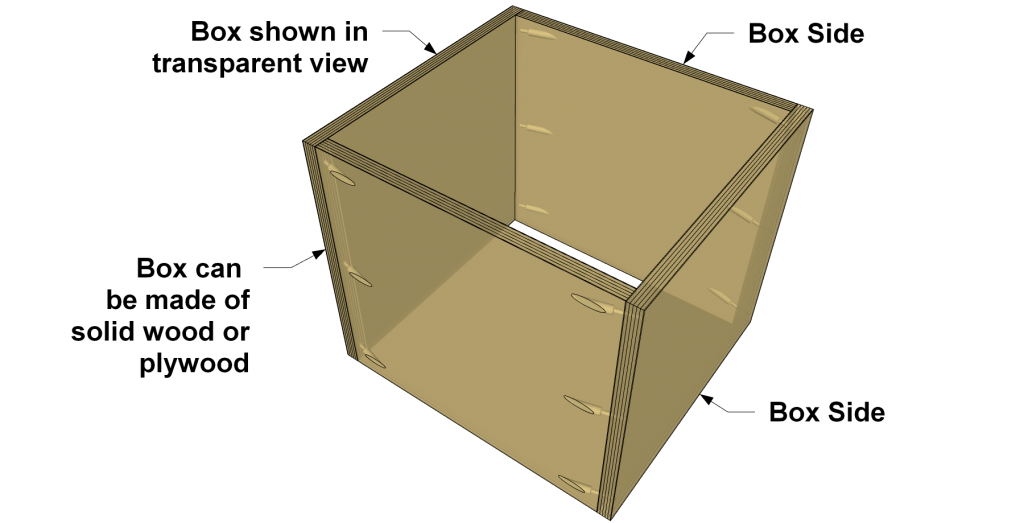
Here's how:
1. Figure out the dimensions of the "box" you need to create, and and so cutting the pieces to size. Smaller structures can be built from solid-wood. Plywood is great for larger structures.
2. 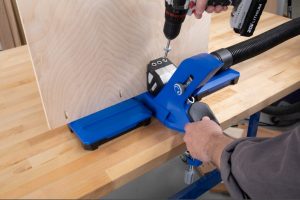 Determine where you want to drill your pocket holes. If the outside of your box will evidence, similar on an entertainment heart, you'll want the pocket holes on the inside faces. If the within will show and the outside is hidden, such as on about kitchen cabinets, you tin place the pocket holes on outside faces.
Determine where you want to drill your pocket holes. If the outside of your box will evidence, similar on an entertainment heart, you'll want the pocket holes on the inside faces. If the within will show and the outside is hidden, such as on about kitchen cabinets, you tin place the pocket holes on outside faces.
3. Set up your Kreg Pocket-Hole Jig to match your cloth thickness, and then drill the pocket holes. Place holes near 1-2″ from each end of the board or panel, and then every half dozen″ or so in between. The material support wings on the Kreg Docking Station (included with the Pocket-Hole Jig 720PRO, and bachelor for the Pocket-Pigsty Jig 520PRO), offering great support for big and long pieces while you drill. If you're using really big panels, the Pocket-Pigsty Jig 520PRO can easily be positioned on the panel.
4. Gather your construction using Kreg Pocket-Hole Screws. If you're building with plywood or MDF, use coarse-thread screws. For solid woods, screw choice depends on the woods: coarse-thread for softwoods, fine-thread for hardwoods.
 TIP: Hold 90° corners easily during associates
TIP: Hold 90° corners easily during associates
Belongings corners together while you're assembling boxes, particularly with big pieces, can be challenging. Kreg offers a couple of clamps that get in a whole lot easier: The Right Angle Clamp and the 90° Corner Clench. Though these clamps piece of work differently, they both aid hold the corner together at the proper bending. Plus, both clamps offer an extra mitt, so you have both of yours complimentary to handle your drill and screws.
6. T Joints
If yous want to turn a bones box into something more, you lot may want to add dividers, shelves, or some other internal structure where y'all'll be creating a 90° articulation that'due south not at a corner. This is known as a "T" joint, and is fabricated in essentially the aforementioned manner as a box corner joint.
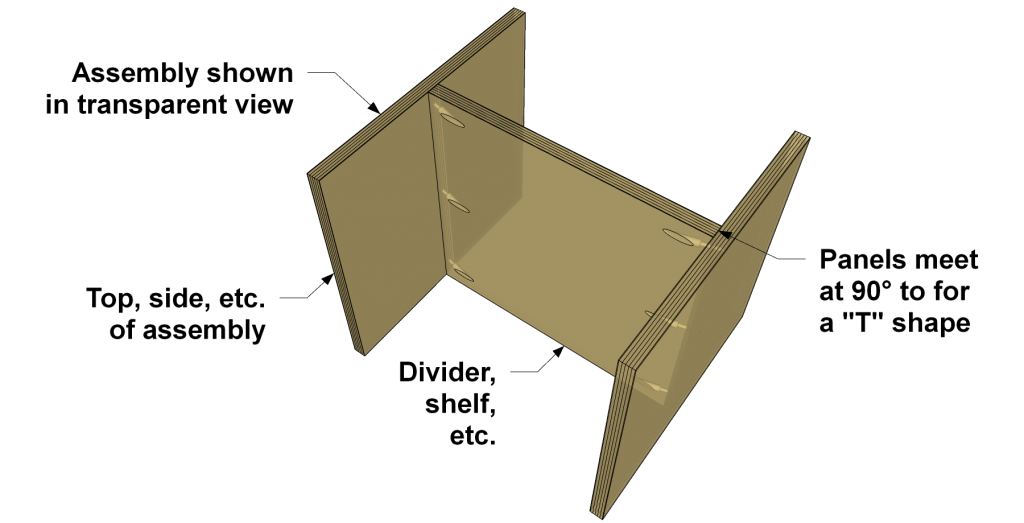
Hither's how:
1. Effigy out the dimensions divider, shelf, or internal panel you demand to create, and so cutting it to size.
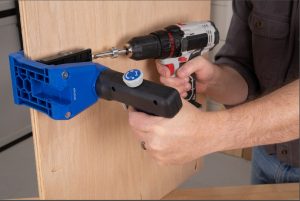
iii. Align the console and then attach information technology using pocket-pigsty screws.
 TIP: Create corner joints easily
TIP: Create corner joints easily
When you're installing dividers and shelves, property the pieces in perfect alignment can be a challenge. To make it easier, attempt using a 90° Corner Clamp. This clamp works bully on corners. It simplifies the process by securing the pieces, and by property them at xc° angles to one some other. Information technology'southward perfect for assembling T joints considering it has a gap in the clamp jaws that allow just 1 clamp to fit over both pieces.
7. Shelf edging:
Whether you build shelves from solid woods or plywood, they tend to sag over time under the weight of their load. With pocket-hole joinery, y'all can strengthen shelves by adding edging at a 90° angle to the edge. Most of the time, edging is oriented so it's flush with the top face of the shelf, and so hangs beneath. But yous can as well position the edging so it sticks up above the shelf to help concur items in place.
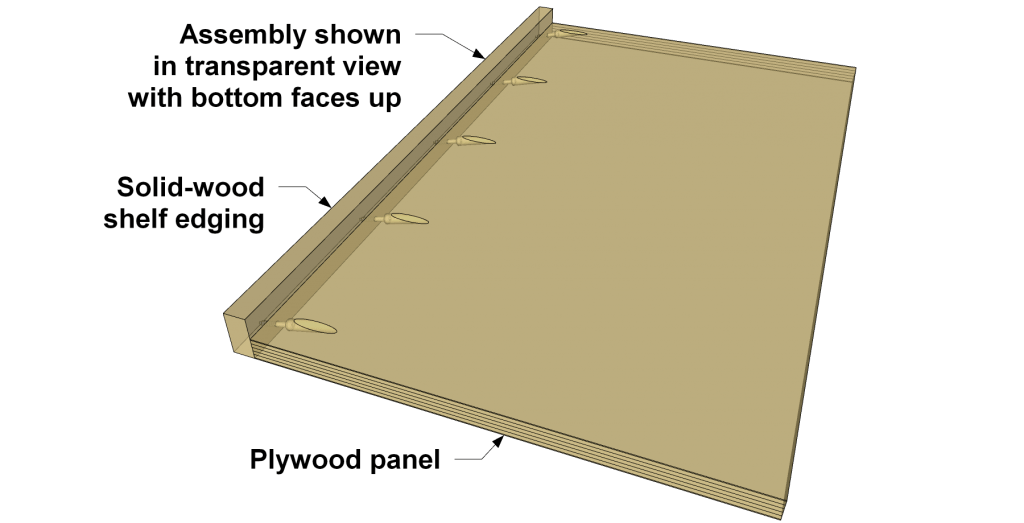
Hither'due south how:
1. Cut your edging piece(s) to length, and to width if necessary. A skillful dominion is to make the edging twice every bit wide as the thickness of your shelf. So, if you're using 3/4″ plywood shelves, then ane×2 boards (3/4″ x 1 one/two″ actual dimensions) works great. Or you can brand your edging yourself by ripping boards to the width y'all need using the Adaptive Cutting System.

3. Adhere the edging to your shelf using Kreg Pocket-Hole Screws. If your edging is softwood, utilise coarse-thread screws. If y'all're using hardwood edging, choose fine-thread screws.
Information technology'southward easy to run across that you can create many kinds of do-information technology-yourself and woodworking projects with these ii types of pocket-pigsty joints. Of course, there are many more things you tin can practise with your pocket-hole jig. At present, go get building! Check out our Projects and Plans page ideas, inspiration, and step-by-footstep instructions for your side by side project.
Associated Products
How To Use Kreg Jig,
Source: https://learn.kregtool.com/learn/7-simple-joints-with-your-kreg-pocket-hole-jig/
Posted by: rodriguezwrearpon76.blogspot.com

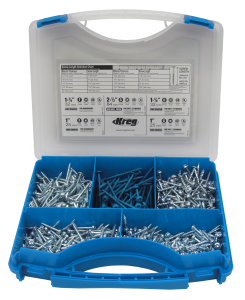 TIP: Use the correct pocket-hole screw
TIP: Use the correct pocket-hole screw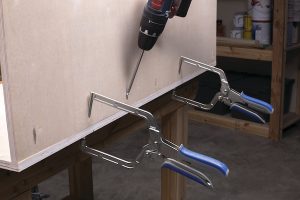 TIP: Hold 90° corners easily during associates
TIP: Hold 90° corners easily during associates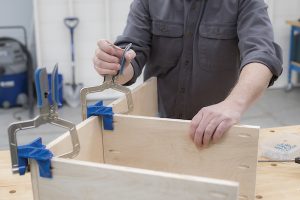 TIP: Create corner joints easily
TIP: Create corner joints easily
0 Response to "How To Use Kreg Jig"
Post a Comment